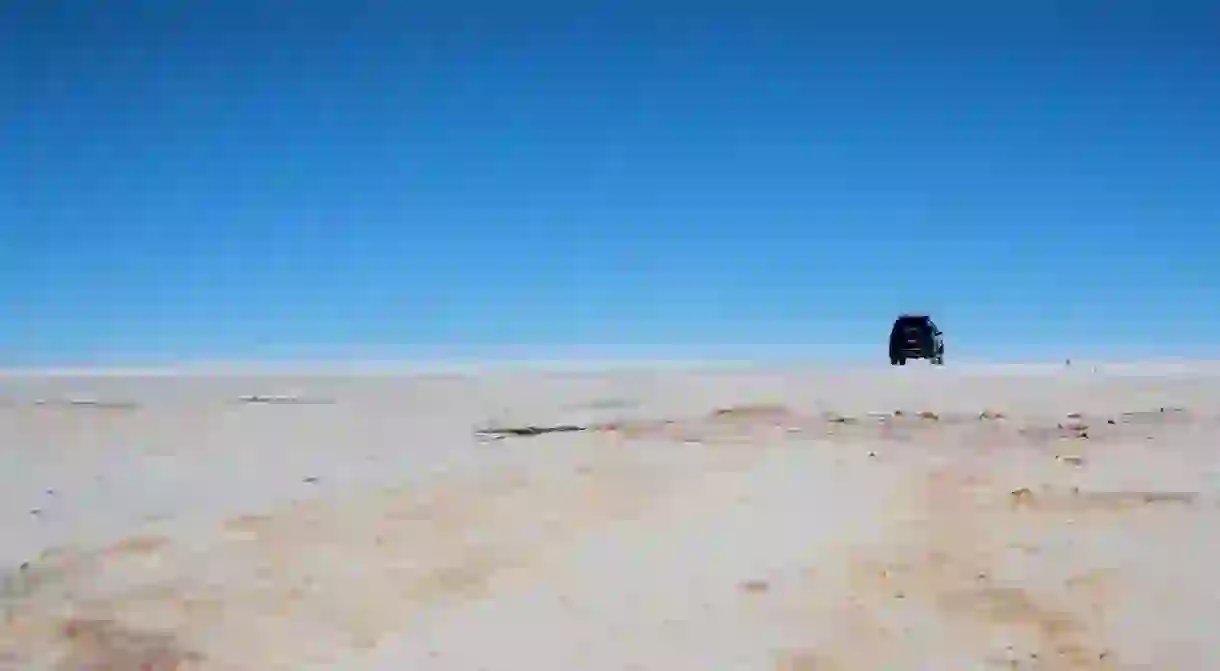The Highlights of The Uyuni Salt Flats Tour, Bolivia

A trip to the Salar de Uyuni and surrounding region is a highlight of any South American tour. Hypnotic, surreal, hauntingly beautiful and refreshingly untouched, this vast expanse is home to some of the most stunning scenery on earth. Let’s take a look at the highlights of the remote region.
The Salar de Uyuni
The main attraction and what everyone has come to see, the blindingly white expanse of the world’s biggest salt flat is guaranteed to impress. The salar is a true photographer’s paradise, offering the chance to snap some fun perspective shots…

Those iconic natural hexagon shaped salt tiles…

Or the incredible mirror effect that engulfs the region after it rains.

Isla Incahuasi
Right in the middle of the salar is a strange island that pops out from nowhere above the salty white desert. An essential stop on any tour, the surreal island is akin to a mountain peak parting its way through the clouds. A forest of native giant cacti and the odd wandering alpaca just add to the surreal atmosphere.

The Salt Hotels
All tours stop at this former salt hotel which nowadays serves as a museum and restaurant. Those on a budget can stay in a basic salt guesthouse while the well-heeled have the option of bunking down in a grandiose salt palace.

The Train Cemetery
The Uyuni train station was once an important transport hub, ferrying in hordes of passengers and shipping out tonnes of minerals from the once profitable mining sector. But a collapse of the mining industry and the loss of the coastline to Chile meant scores of locomotives were left to rust in the harsh highland desert. These days, the climbable wrecks serve as the perfect Instagram photo op.

Laguna Colorada
The strange color of this big red salty lagoon is caused by sediment and the pigmentation of algae. If the lagoon wasn’t pretty enough in itself, it and the surrounding lagoons are packed with three different species of colorful pink flamingos.

Siloli Desert
Be properly acclimatized before visiting the highest desert in the world at a dizzying 15,000 feet (4550 meters). Dusty, barren and hopelessly isolated, many wonder if they have arrived at the end of the world.

Árbol de Piedra
A psychedelic oddity, this 22 foot (7 meter) tall stone tree lies on the edge of the Siloli Desert. It owes its rather unusual shape to strong winds which have eroded its soft sandstone stem over millions of years.

Sol de Mañana
Meaning “morning sun” in English, this series of impressive geysers are best observed at first light. Pools of boiling mud abound while the strongest geyser sprays pressurized steam up to 160 feet (50 meters) in the air. There are no safety barriers in place so think twice about getting up close for a selfie.

Dalí Desert
Named after the surrealist master himself, the Dali Desert is famous for its unworldly landscapes. Hues of brown and ochre contrast sharply with the deep blue sky and the snowy peaks of nearby volcanoes. Meanwhile, random piles of rocks inexplicably scattered around the desert complete the dreamy scene.

Laguna Verde
Nestled beneath the ominous Licancábur volcano lies one of Bolivia’s most colorful attractions. Although not as green as it was years ago (a process blamed on climate change), the lagoon still boasts a vibrant hue and a dramatic setting.

Volcano Licancábur
Visitors will pass many volcanoes on the tour, but none are quite as menacing as Licancábur. This 19,555 foot (5960 meter) giant can be climbed by energetic tourists for an additional fee, but be warned, NASA has carried out experiments on the peak to prepare for future missions to Mars, so the environment is not exactly hospitable to human life.














